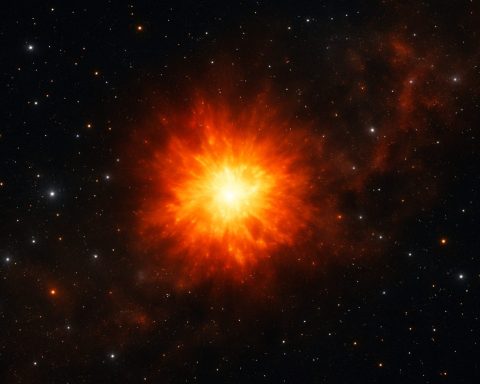Meet the Most Energetic Explosions in the Universe: “Extreme Nuclear Transients” Rewrite the Record Books
Astronomers discover “extreme nuclear transients”—explosive events 25x brighter than supernovae, offering new insights into black hole growth.
- 25x more energy than the brightest known supernovae
- 100 Suns: energy output in one year equals 100 Suns’ 10-billion-year lifetimes
- 10 million times rarer than supernovae
- Years-long luminous flares visible across galaxies
A team of astronomers from the University of Hawaiʻi at Mānoa’s Institute for Astronomy (IfA) has unlocked an astronomical marvel: a new class of cosmic explosions called “extreme nuclear transients” (ENTs). These rare, intense events are rewriting what scientists know about the death of massive stars and the feeding habits of supermassive black holes.
Unlike anything previously witnessed, ENTs erupt with unrivaled luminosity—dwarfing even the mightiest supernovae.
Discovered through combined efforts and persistent detective work, ENTs are transforming what we know about galactic centers and cosmic history.
What Are Extreme Nuclear Transients (ENTs)?
ENTs happen when a giant star—at least three times the mass of our Sun—ventures too close to a monster: a supermassive black hole lurking in a galaxy’s core. The black hole’s titanic gravitational forces tear the star apart, igniting a cosmic flare so bright it can be seen across billions of light-years.
The IfA team first spotted these dazzling events by searching through the European Space Agency’s Gaia mission data, finding flares that brightened much longer and stronger than anything seen before. These weren’t typical tidal disruption events—they were something new, with brightness sustained for years, not months or weeks.
How Do ENTs Differ From Supernovae and Other Explosions?
Most supernovae—when massive stars explode at the end of their lifespans—flash brilliantly but fade in months. By contrast, ENTs burn with the power of 100 Suns for a year, according to the team’s latest findings published in the prestigious journal Science Advances.
One standout event, Gaia18cdj, unleashed 25 times as much energy as the wildest known supernova ever recorded—breaking every astronomical record.
Because ENTs are so rare—appearing at least 10 million times less often than supernovae—it took painstaking, multi-year observations, including from Hawaii’s own W. M. Keck Observatory and around the world, to piece together their full story.
Why Are ENTs So Important for Black Hole and Galaxy Research?
These energetic detonations offer a unique window into how galaxies—and the supermassive black holes at their hearts—grew and evolved in the early universe. ENTs’ extreme brightness allows astronomers to spot distant black holes feasting on stars, revealing how these cosmic giants once rapidly ballooned in size, especially when the universe was only half as old as today.
Every detected ENT brings astronomers closer to reconstructing the furious past of galaxy formation and understanding the mysterious mechanisms behind black hole feeding frenzies.
How Can Future Observatories Help Find More ENTs?
ENTs’ rarity means finding them depends on persistent sky surveys and sharper technology. Upcoming powerhouses like the Vera C. Rubin Observatory and NASA’s Roman Space Telescope are expected to uncover many more of these spectacular cosmic explosions, painting a richer picture of our universe’s most extreme environments.
Q&A: Get the Details on Extreme Nuclear Transients
- Q: How often do ENTs occur?
A: They are extraordinarily rare—rough estimates suggest they happen at least 10 million times less frequently than supernovae. - Q: How do astronomers find ENTs?
A: By sifting through massive astronomical survey data, looking for unusually bright, long-lived flares at galaxy centers. - Q: Why do ENTs last so long?
A: Because the disrupted star feeds the black hole slowly, leading to smooth, years-long flares, unlike the rapid decay seen in supernovae. - Q: What can ENTs tell us?
A: They provide unprecedented insights into black hole growth, galactic evolution, and the most extreme forces in the universe.
How Can You Learn More or Join the Hunt for Cosmic Explosions?
Stargazers and science fans can follow updates from the Institute for Astronomy and keep watch for breakthroughs from the Vera Rubin Observatory and NASA’s Roman Telescope.
Stay tuned for more mind-blowing cosmic discoveries as astronomers push the limits of our universe—subscribe to reputable science news and keep your curiosity alive!
- Watch for big updates from major sky surveys: Gaia, Rubin, Roman
- Follow reputable astronomy sites and journals
- Share intriguing finds and science news with your community
- Keep wondering: What will the next record-shattering cosmic event reveal?









